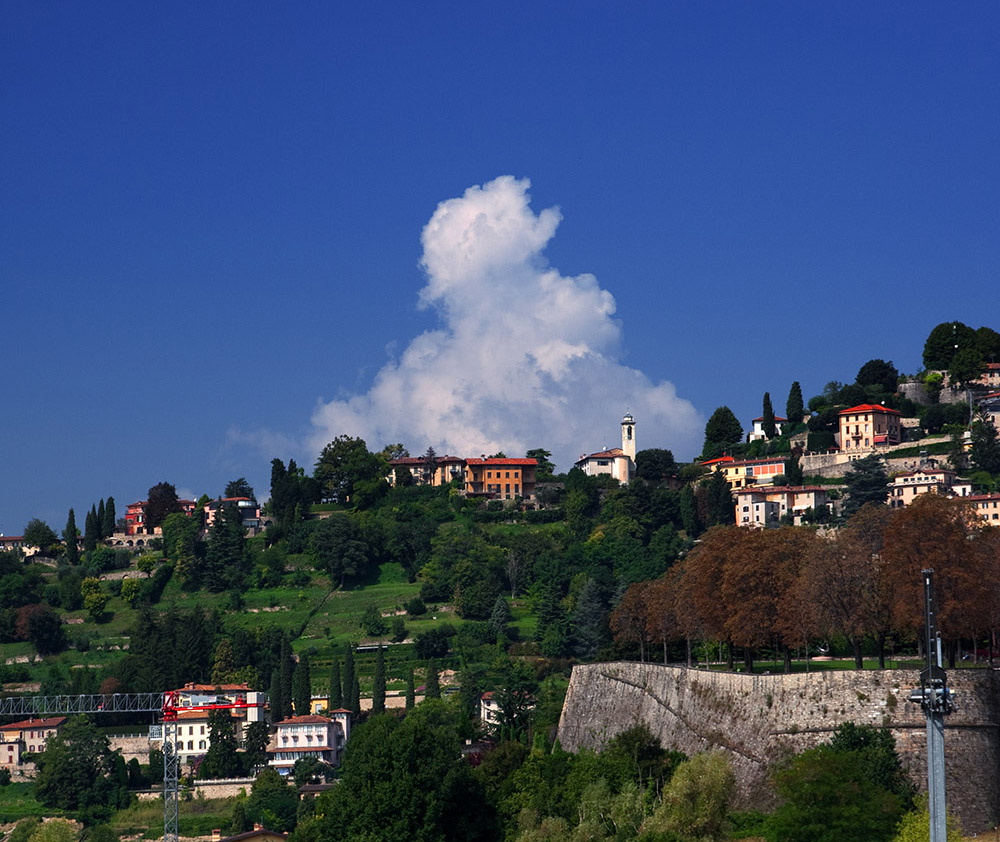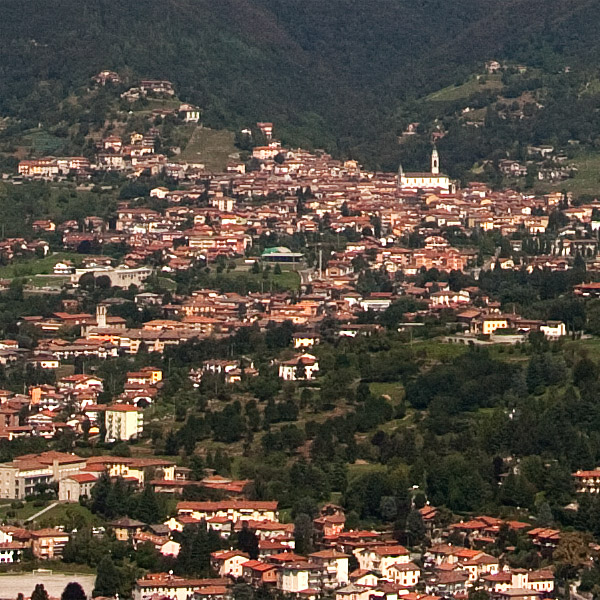Let's have a look at the Tamron 28-75mm f/2.8, or Tamron AF 28-75mm f/2.8 Aspherical LD XR Di SP if we're being precise. I was about to say that the Tamron 28-75mm f/2.8 has a longer name than top actress and film-maker Isabella Rossellini, whose full name is Isabella Fiorella Elettra Giovanna Rossellini, but that's not true because Isabella Rossellini's name is either three characters longer or exactly the same length, depending on whether you count / and . and - as characters, which I do, the end.
What do all those characters mean? Tamron is the name of the company. Tamron was founded in 1878 by a Peruvian man called Michael Simpson who had a dream in which snails could be harnessed to transport cargo. The company now makes lenses.
This particular lens isn't spherical, it's a tube. The rest of the name is something to do with assembly language programming. If you type LD XR Di SP into an industrial computer something happens. I don't know. It's just marketing bumpf. The lens is supposed to have special, digitally-integrated low-dispersion extra-refractive glass and one of the elements is aspherical and it focuses internally instead of expanding and it's special, but in a good way, but the same is true of every other lens Tamron makes so what's the point?
Dear reader, if you had letters after your name, what would they be? I would have the letters ST for super-terrific and K for knowledgeable and W for witty. In the real world some people have letters after their name to indicate that they have special properties, such as for example Sir Antony Arthur Acland KG GCMG GCVO, who is made of pottery, and Sir Colville Norbert Young GCMG MBE, who in addition to being governor-general of Belize can set things on fire with the power of his mind.
Was it Zeiss? With their T coating? Back in the early years of the previous century Zeiss and Leica gave their lenses names - Tessar, Summilux, Biogon, Elmar and so forth - and then Zeiss added T to indicate the special Zeiss multi-coating, and it snowballed from there and now lenses have largely meaningless strings of characters. Please stop talking.
The Tamron 28-75mm f/2/8 etc is a popular general-purpose zoom lens for film and digital SLRs, notable for its combination of full-frame coverage, f/2.8, and modest price. It's also notable for its surprisingly good performance, although the build quality is uninspiring. It focuses internally, but the inner tube / front element extends at 75mm and I'm always worried that a sharp tap will jam it. It's plastic, including the filter thread. My copy had some plastic flashes - little hairs of spurious plastic, a byproduct of the manufacturing process - around the rear element. I had to pluck them out (carefully).
* Three if you count the Contax N Digital, but the Tamron 28-75mm f/2.8 was never sold for the Contax N mount. The handful of Contax N users might have enjoyed it - the system never had a fast general-purpose zoom.
Zoomed to 75mm on an old Canon EOS 50E film camera. Nikon doesn't have a problem with third-party lens manufacturers but Canon refuses to hand over their lens mount data, so the likes of Tamron, Tokina and Sigma have to reverse-engineer it. Historically Tamron and Tokina have had better luck at this than Sigma.
I've owned my Tamron 28-75mm f/2.8 for six years. I was going to write about it a long time ago but I decided to take some pictures with it first. I went over the mountains yonder and kept going, and then I came back to find that my hometown was small, and nothing there would excite me any more. The lens appealed to me because firstly I hate spending money and secondly I'm not usually a fan of general-purpose zooms. General purpose zooms are portrait lenses that aren't long enough or fast enough; they're landscape lenses that aren't sharp enough or long enough; no amount of technical trickery will conjure the look of 35mm f/1.4 from a fast zoom; they're ungentlemanly; you have to spend a lot to get good performance. Next paragraph, bored with this paragraph.
What's it like optically? Sharp in the middle at f/2.8 at all focal lengths except 75mm, but even then it's pretty good, generally good in the corners stopped down to f/8. Here's a chunk of scenery at 75mm f/8, with a polarising filter, shot with a full-frame 21mp Canon 5D MkII:
One thing. The Tamron 28-75mm has a 67mm filter thread but I found that even a slim polarising filter vignetted, so I used a metal 67-72mm step-up ring and an ordinary 72mm filter instead. Given that the lens has a plastic filter thread this is probably a good idea in general. It saves wearing out the plastic.
Another thing - there are lots of reports on the internet of sample variation and inconsistent performance, with several reviews pointing out that one side of their lens was sharper than the other. I'm not surprised. The build quality isn't that bad, but at 75mm the inner tube wobbles a bit, and I wouldn't be surprised if the internal components have relatively loose tolerances. Mine is slightly softer in the left-mid-upper part of the image, which is tolerable because I usually don't put things in that part of the frame except sky and clouds. Here's a 100% crop of the centre at f/8:
You can see the radio mast, and a bit of grain. I shot it at ISO 200 with Canon's "highlight tone priority" setting, which seemed like a good idea at the time but in retrospect was not. Bear in mind that this isn't a test chart; we're looking through a polarising filter and a mile of turbulent air. Here's the extreme bottom-right corner, with no sharpening but a tiny bit of CA correction:
It's good enough for me. Two hundred years ago, before the invention of photography, I would have simply looked at that scene. I wouldn't have thought about how to present it for an audience of strangers on the internet. I would have looked at the scene and walked away and no-one would ever have known; or I would have sat and painted it. Painted the hill and the trees and the church and the empty fields around it. Think of how horrible it was before Facebook and Twitter. People lived lives without meaning, without value. They just lived and died and ended up buried somewhere and no-one remembered what they did. If I had been born two hundred years ago my gravestone would now be landfill beneath a housing estate.
But provided you subscribe to me and hit the like button and also donate to my Patreon, my life now has meaning, and so does yours! We're not just going to die and be forgotten. One thousand years from now my blog will still be cherished by an audience of millions, and so will you! Women will imagine what it must have been like to meet me. Men will wish they had been me. Also, I do voiceovers. I own a Neumann U47 FET and a pop-shield. The guy who does Forgotten Weapons doesn't own a pop-shield.
The lens focuses quite closely at 75mm, and the bokeh is surprisingly good at that aperture.
At 50mm or so the bokeh isn't as good, however. This is the thing with general-purpose zooms. You either use them at 24mm or 70mm, so why not carry an ultrawide zoom and a compact telephoto and a 50mm or 35mm f/1.4 instead? Because you'd be walking everywhere with a backpack, that's why. Unless you use a compact camera, but then the image quality isn't as good. But what does it matter given that some of the most iconic photos of the modern age are shot at close range with an iPhone? Depression, uncertainty and doubt are constant companions of the photographer.
More mountains at 28mm also f/8:
In the centre:
And the corner, which falls apart a bit in the last hundred or so pixels, but I have seen worse:
I have seen worse. I have seen so much worse. The threshold of horror has no lower limit. That's what keeps me going. The knowledge that no matter how bad things get, I am still at the top of the slope. Heading downhill, but the same is true of the other passengers. They are heading downhill as well. We are all heading downhill together. All of us, together.
Unusually for a thing featured on my blog the Tamron 28-75mm f/2.8 is still on sale. I think. Tamron's UK website doesn't list it, but it's still available online. Tamron also sells an image stabilised 24-70mm f/2.8 zoom, but it's a lot more expensive.
The 28-75mm f/2.8 is or was available in Canon, Nikon, Pentax, and Minolta/Sony full-frame lens mounts, the latter particularly odd given that neither Pentax nor Konica Minolta had a full-frame digital SLR in 2003 (Pentax had once had been having a full-frame digital SLR, but nothing came of it). The Nikon version originally had an aperture ring and screw-driven autofocus; a later revision took away the aperture ring but added an internal motor so it will focus on Nikon cameras that don't have a screw drive. This may be true of the Pentax version as well, I'm not sure.
Does the 28-75mm make any sense? Yes, provided you don't have a track record of bashing your lens against things. In the UK at least Tamron has a five-year warranty. Tamron reverse-engineers the Canon EOS lens mount system, but as with Tokina I've never heard of Tamron lenses failing to work with EOS cameras. This very lens focuses and works perfectly well in both ordinary autofocus and live view on my 5D MkII, and my old 10D, and for that matter my EOS 50e film camera. Brand new the lens sells for £300-400, on the used market it appears to halve in value before diminishing to zero if it breaks; of course two broken Tamron 28-75mm f/2.8s could have bought you a single excellent-condition used Canon 24-70mm f/2.8L but that's up to you, the end.


























